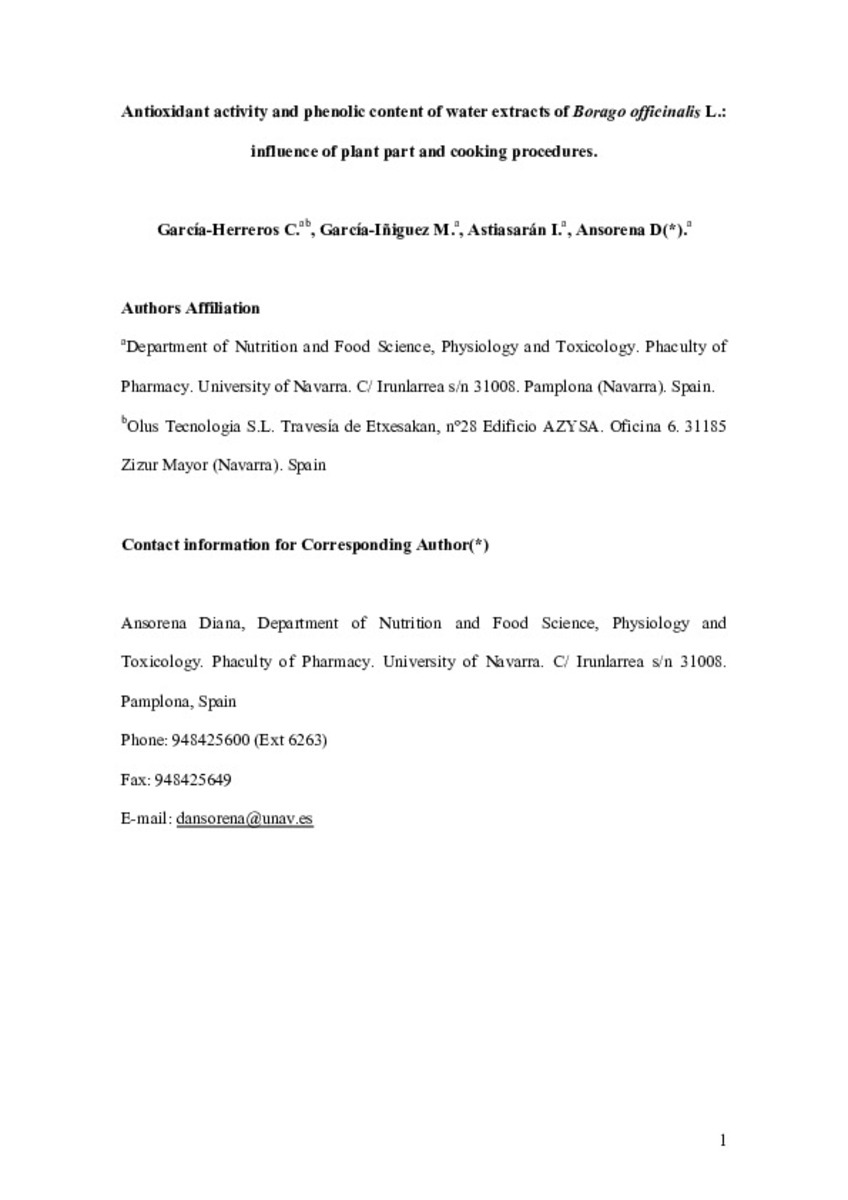Antioxidant activity and phenolic content of water extracts of Borago officinalis L: influence of plant part and cooking procedures
Palabras clave :
ABTS
Boiling
Borage
DPPH
Steaming
Fecha de publicación :
2010
Editorial :
Chiriotti Editori
Cita:
García-Herreros C, García-Iñiguez M, Astiasarán I, Ansorena D. Antioxidant activity and phenolic content of water extracts of Borago officinalis L: influence of plant part and cooking procedures. Ital J Food Sci 2010;22(2):156-164
Aparece en las colecciones:
Estadísticas e impacto
0 citas en

0 citas en

Los ítems de Dadun están protegidos por copyright, con todos los derechos reservados, a menos que se indique lo contrario.











